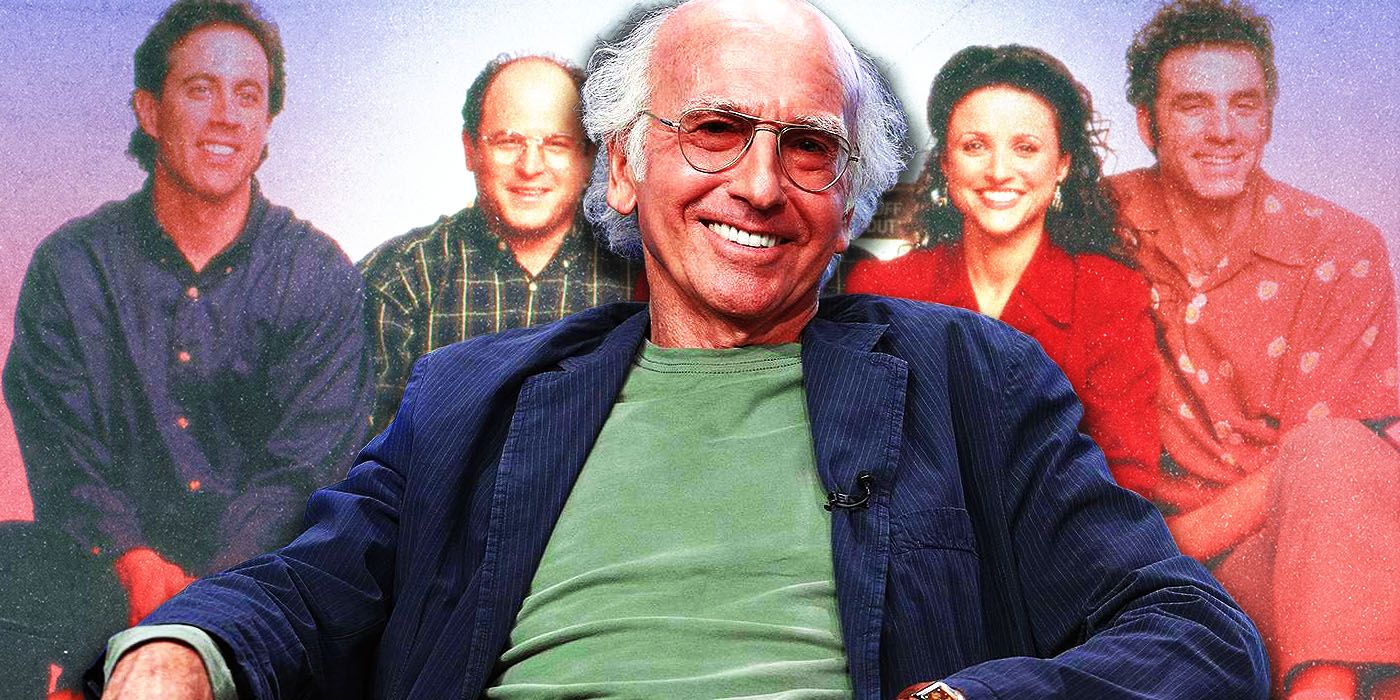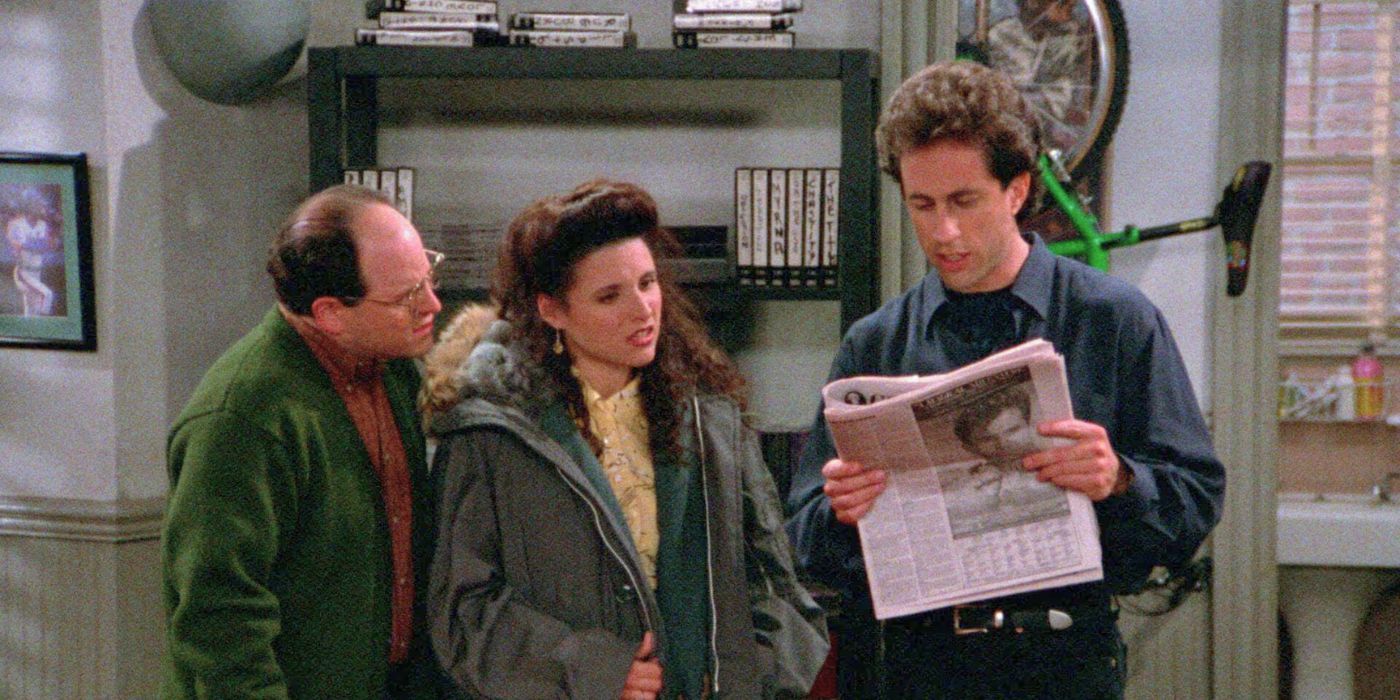
In the never-ending debate regarding which television sitcom should be considered the best of all time, it’d be incredibly difficult to leave Seinfeld out of the conversation. At the time of its original run, it was far and away from the typical sitcoms that were airing at the time. It lacked the family dynamic seen in shows like Full House and The Fresh Prince of Bel Air, as well as the wholesome sentiment of Friends, but that’s also what made it such a phenomenon. It was a show whose humor came from its unlikable main characters tackling absurd and often uncomfortable situations with a slightly more cynical edge. One of the show’s most popular episodes, Season 4’s “The Outing”, is one that perfectly encapsulates the show’s comedic essence.

While often seen as one of the show’s best episodes, it was also one that had a somewhat troubling production compared to most of the others. At the time of its premiere, it was becoming more and more common for TV shows to feature gay characters and explore more LGBTQ themes in certain episodes. When the time came for Seinfeld to tackle such a subject, both of the show’s creators, Larry David and Jerry Seinfeld, were unsure of exactly how the episode would be received by the gay community. In the end, their worries were all for nothing. As it turns out, it was the gay community’s response to the episode that played a major role in the legacy that it has today.
How Seinfeld Popularized the Phrase “Not That There’s Anything Wrong With That”
Episode 16 of Season 4, “The Outing”, starts with Jerry, George, and Elaine casually having coffee in their usual booth at the diner. Noticing that the woman behind them is eavesdropping on their conversation, they decide to pull a prank and converse in a manner that implies that Jerry and George are a couple. As it turns out, the woman, Sharon, happens to be a newspaper reporter who is planning on interviewing Jerry. When she later meets up with Jerry to do so in his apartment, the conversation between him and George solidifies her misconception of their relationship. The news is printed the next day, falsely out Jerry and George as lovers, much to their dismay and their family and friend’s shock and confusion.
Throughout the rest of the episode, in between the social hi-jinx that Jerry and George are faced with, both they and the other supporting characters make several points to follow up their denial and confusion with the phrase “Not that there’s anything wrong with that”. This not only makes the scenario even funnier but significantly downplays any potential sense of homophobia that might have been interpreted in the character’s reactions. While it had been done a few times in the past, this was one of the more notable first times in mainstream media that a fictional character expressed that being gay was not a problem, as well as the first time for a series to make an entire episode about it. There was nothing but good intentions in the making of this episode, and the jokes were all made in good fun. However, the creators of the show weren’t entirely sure if it would be perceived that way at the time.
Creators Larry David and Jerry Seinfeld Were Worried About Offending the Gay Community
According to several interviews found on the DVD release of Seinfeld Season 4, the show’s two creators still had some concerns over the sort of impact that “The Outing” would have on the gay community. Of course, these concerns were not entirely unwarranted. Before the 90s, except for very rare exceptions, there was hardly any gay representation to be found in any kind of mainstream media. By the time the 90s did arrive, it created somewhat of a renaissance that began to introduce and feature gay and bisexual characters more heavily on television shows. Not all of these attempts worked out, however, as Ellen DeGeneres infamously lost her ABC sitcom after using it as an avenue for her coming out.
Not only that but at the time, except in the cases of certain shows like Will and Grace and movies like The Birdcage, most other examples of gay characters weren’t exactly written very well. These portrayals of LGBTQ characters are often more one-dimensional by today’s standards, with most of them either being stereotypes or simply having their sexuality be their only defining character trait. With all this in mind, perhaps it’s understandable as to why exactly Seinfeld and David were so worried. While the episode didn’t go out of its way to directly mock the gay community by any means, most of the jokes did lean into certain stereotypes. But by the time the episode premiered, its reception was the opposite of what they thought it could’ve been.

Despite the Concerns, “The Outing” Received High Acclaim and Won a GLAAD Media Award
The fact that “The Outing” was so beloved and embraced by the gay community, despite Seinfeld and David’s concern over offending them, is perhaps one of the biggest ironies in the history of television. More than anything, it made the gay community feel seen and heard in a way that no other show had done for them. The episode was so beloved and acclaimed that it even received some very well-deserved accolades. The writer of the episode, Larry Charles, received recognition for his work at the 1993 Emmys, being nominated for Outstanding Individual Achievement in Writing in a Comedy Series. Not only that, but it even wound up winning a GLAAD Media Award, an achievement that was considerably more meaningful given the episode’s subject.
For those who may not be in the know, GLAAD (an acronym for “Gay and Lesbian Alliance against Defamation”) is a non-profit organization that seeks to prevent defamatory depictions or coverage of LGBTQ figures in the mass media. They also give out accolades to pieces of media that they feel do the best job of executing positive portrayals of LGBTQ themes and characters. With its repetition of the “Not that there’s anything wrong with that” affirmation, “The Outing” received the award for Outstanding Comedy Episode. For the LGBTQ community, even though they were not always exactly the most realistic or flattering depictions, the 90s offered a sort of saving grace in making those portrayals more prominent on television, introducing audiences to a part of not just America, but the world, that had never been given as much of a voice. For a show like Seinfeld to become a small part of that legacy marked something of a milestone.

Seinfeld was never the sort of show to carry any kind of sentiment or message. Its main characters were vain, petty, and practically sociopathic, and would never really grow or learn from any of their experiences. It was a show about “nothing”, whose only real goal was to make its audience laugh without resorting to any of the typical sitcom tropes or family-friendly fare. For such a show to end up having such a positive and admirable impact on the gay community, on a group of people that were marginalized for such a long time before its inception, whether intentional or not, is something truly special and worth celebrating.
Leave a Reply